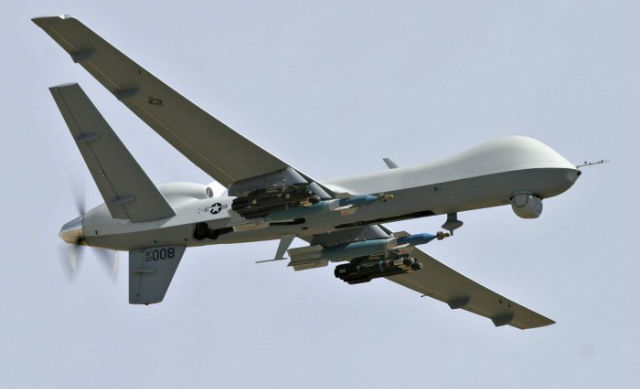The US Air Force is trying to ascertain how best to formulate its future unmanned aircraft fleet so that it could operate inside contested airspace while also maintaining its ability continue the USA’s aerial campaign against various terrorist groups around the world.
“We’re continuing to look at potential trade space in the RPA [remotely piloted aircraft] programmes and force structures, with an eye towards striking the right balance between capabilities required to meet the continuing counter-terrorism mission set and potential operations in more contested environments,” says a senior USAF official. “Most studies indicate that we are a little overly-invested in RPA capabilities for permissive environments and perhaps under-invested in capabilities for the high-end fight.”
As the US military begins to reorient itself toward the Pacific after a decade of fighting insurgents in Iraq and Afghanistan, the Pentagon is increasingly focusing its strategic thinking on how to engage targets inside an anti-access/area denial (A2/AD) environment. The shift in strategy will impact every aspect of how US forces fight, including how intelligence, surveillance and reconnaissance (ISR) data is gathered. “We also continue to pay a great deal of attention to the A2/AD challenge and its potential impacts on all our ISR assets and force structures,” the USAF official says.
One option is to develop a follow-on unmanned aircraft to replace the air force’s current fleet of General Atomics Aeronautical Systems MQ-1 Predators and MQ-9 Reapers that would be capable of operating in A2/AD environments. “The follow-on RPA is very likely to possess capabilities to allow it to operate in contested environments, but may not be the only asset in that category,” the official says. “So-called ‘penetrating ISR assets’ could be manned, unmanned or optionally manned.”
Right now, the USAF does not have a definitive plan to develop and field a new unmanned aircraft to replace the Reaper. “While there were some active discussions and staff work a few years ago related to an ‘MQ-X’ initial capabilities document [ICD], the bulk of that work was also suspended when the force provider [Air Combat Command] decided that the MQ-9 Block 5 aircraft would meet our medium altitude RPA requirements for the foreseeable future,” the official says.
But while it does not have a Reaper replacement in mind, the USAF is keeping a close eye on what the US Navy is doing with its unmanned carrier-launched surveillance and strike (UCLASS) aircraft programme. “We continue to monitor the efforts of the US Navy and their UCLASS development to potentially leverage the applicable ICD work when needed for a follow-on medium altitude RPA,” the official says. But, he notes, the timeframe for any such project is still to be determined.
But future intelligence-gathering sensors might not need to be mounted on a particular type of aircraft. “As we look toward the future, longer range, higher resolution, ‘platform-agnostic’ ISR sensors on non-traditional ISR assets such as fifth-generation fighter and/or bomber aircraft could also provide valuable ISR information in contested environments,” the official notes.
Photo: General Atomics Aeronautical Systems
Source: Flight Global

